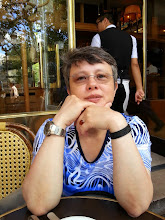"British Painting: 1700-1850", National Gallery Company DVD, 2005, Louise Govier, ISBN 9781857093964
"For many visitors to the National Gallery, John Constable's The Hay Wain is an established and familiar painting, and it remains one of the most popular in the collection. But when it was first made, this harmonious scene was at the cutting edge of landscape painting. This art DVD shows how British paintings developed through the eighteenth century, responding to changes in society and the ambitions of painters who wanted to challenge their continental rivals." Consider yourself warned: British painting, between 1700-1850 is NOT chocolate box material. Forget what you think you know about Constable's "The Hay Wain" (1821), Hogarth's "Marriage-à-la-mode" (1743-45) or even Gainsborough's "Mr and Mrs Andrews" (1748-49). In fifty intense and very entertaining minutes, the then Adult Learning Manager of the National Gallery in London, shows us how to look anew at these very popular paintings, and what exactly made them avant-garde paintings at their time.
Louise Govier, who is now MLA Museums Clore Leadership Fellow 2008-09 at Clore Leadership Programme, in Bornemouth, UK, starts her demonstration with a brief introduction to the historical context in which these painters developed their art. Until the Royal Academy of Arts was founded by sir Joshua Reynolds in 1768 to promote British Art, painters like Constable, Hoggarth or Gainsborough would often have a hard time selling their works. Because of the genres hierarchy, landscape and genre painting were considered lesser genres than history painting. Each genre had its own set of rules and corresponding expectations. Then, Louise Govier reminds us that British art was then regarded as provincial, compared to that of the Continent. She argues that each artist had to fight many battles, first to innovate in his own genre, then to win over the support of the art patrons as well as the art-buying people.
What makes the National Gallery DVD Collection particularly interesting, is the quality and originality of its scripts. Each well written, well designed and above all, well narrated. Louise Govier's diction is flawless, and she knows how to capture her audience. I like her way of presenting entertaining and informative art historical materials, without sounding too scholarly or too common. For instance, when talking about Constable's "Hay Wain", she explains how the painter tried to merge landscape painting with social statements about the necessity of low scale rural development, how his vision of idealized Suffolk landscape borrowed from the same principles as history painting. In fact, because familiarity with this - and others too - painting often breeds contempt, Louise Govier insists on Constable's groundbreaking approach to landscape painting. "The Hay Wain is not a chocolate box painting", and we are friendly invited to look at these British painters with a new pair of eyes. And indeed, everything is this National Gallery DVD Collection is designed to satisfy the eyes, as well as the mind. Unlike many so-called art DVDs, this one is filmed in various locations, inside the National Gallery, as well as outside in Suffolk county. At the end of this documentary, one feels definitely cleverer about 18th Century British painting, not realizing one actually knew so little about some of Britain's favourite painters.













No comments:
Post a Comment